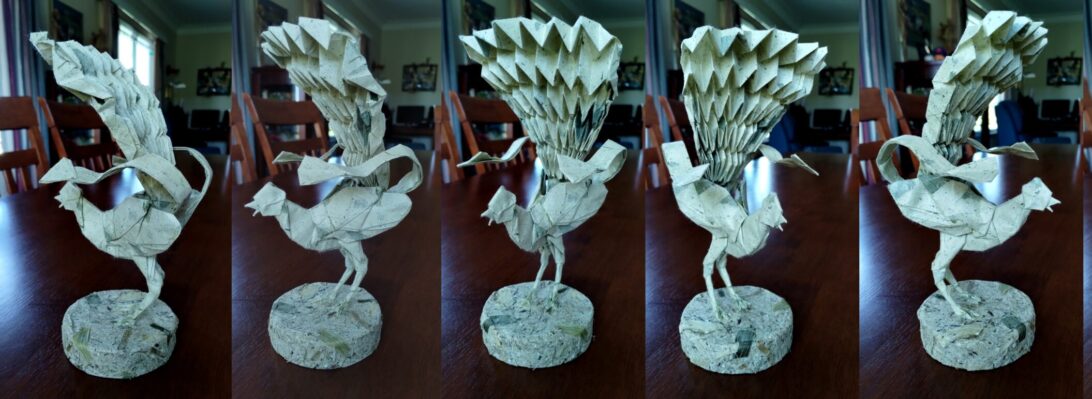Our local community Library has display cases, I have more origami models in storage that I can count any more so offered to provide some models for a month or so for a display:

The interesting part of this was selecting a variety of models to demonstrate the breadth of the discipline. The challenge was to select only enough models to fill the small display cases.

I decided on a varied collection of single sheet figures, modulars and old favourites, the mix is eclectic and dizzying.

The exhibit is on display at least until the end of August, possibly longer.
You can go see it at Holland Park Library




























